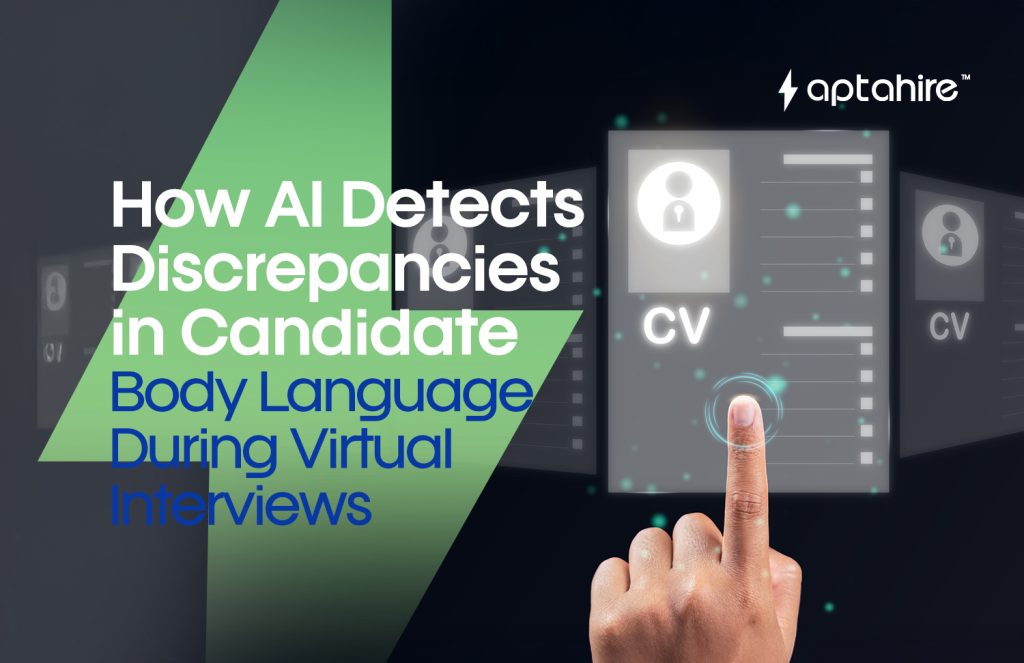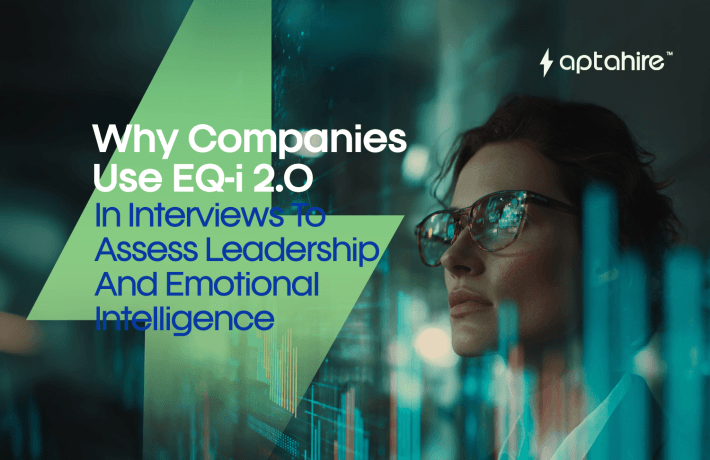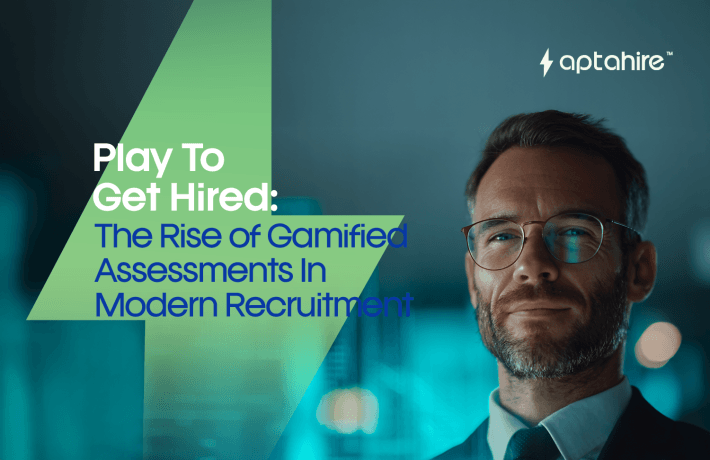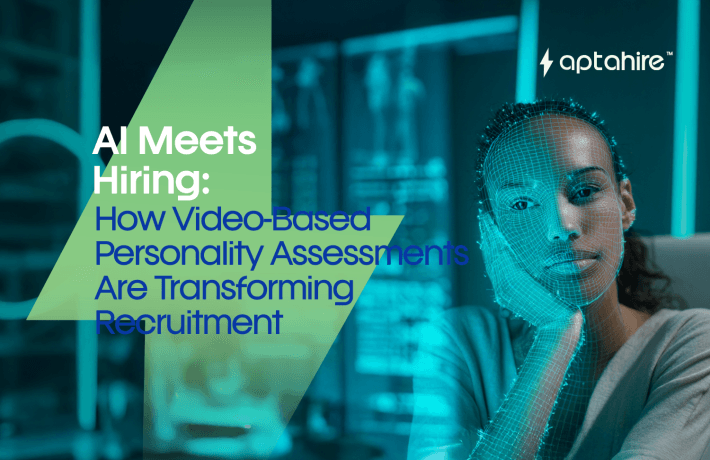How AI Detects Discrepancies in Candidate Body Language During Virtual Interviews

Let’s Set the Scene
Picture this.
You’re on your 5th virtual interview of the day. A candidate logs in with a confident smile, says all the right things, and seems like a great fit. But something just… feels off. You can’t quite put your finger on it.
Is it the slight hesitation before answering key questions? The way they avoid eye contact when talking about past experience? Or is your Zoom fatigue just kicking in?
Here’s the good news: AI can now help you see beyond the screen, literally.
AI-powered virtual interviews are not just listening to candidates. They’re watching them. Analyzing micro-expressions, posture, gaze direction, and even subtle behavioral cues to detect inconsistencies and uncover authenticity.
Let’s dive into the fascinating world of how AI decodes body language during virtual interviews, and why it’s revolutionizing hiring.
Experience Meets Innovation: Why Body Language Still Matters in the Digital World
We’ve always known that communication is more than just words. In fact, over 70% of communication is non-verbal. But in virtual hiring, much of that body language gets lost in translation, or rather, in pixelation.
That’s where AI steps in, not as a judge, but as a super-observant sidekick. Think of it like having Sherlock Holmes sitting quietly beside you during an interview, picking up on clues you missed.
AI tools today are trained to detect things like:
✅ Eye movement and contact
✅ Facial expressions (like frowns, smiles, or raised eyebrows)
✅ Head tilts and nods
✅ Posture (slouching vs upright)
✅ Voice tone and stress indicators
✅ Synchronization between verbal and non-verbal cues
How AI Actually Reads Body Language
Step 1: Facial and Gesture Recognition
Using your webcam feed, AI maps key points on the face and body, tracking muscles around the eyes, mouth, and brows. A micro-smile? It sees it. A fake smile? It knows.
Step 2: Voice and Tone Analysis
AI listens for tone shifts, stuttering, long pauses, vocal stress, and unnatural rhythm. When someone says they’re “excited” about the role but sound flat? Red flag.
Step 3: Real-Time Behavioral Sync
The most powerful AI models don’t look at these things in isolation. They synchronize them. For example:
- Does the candidate avoid eye contact only when talking about previous employers?
- Are they fidgeting when asked about certifications they listed on their resume?
This behavioral mapping helps detect inconsistencies or signs of discomfort that may not match the verbal narrative.
Detecting Discrepancies: Not About Policing, But Protecting
Let’s be clear, AI isn’t here to play detective and catch people in lies. That’s not the point.
The goal is to:
🔹 Spot inconsistencies that suggest deeper probing is needed
🔹 Highlight areas for follow-up during human interviews
🔹 Support more informed decision-making
🔹 Ensure fair assessments by removing unconscious human bias
For example:
- A candidate says they led a team of 10, but their body language becomes closed-off and uncertain when discussing leadership style.
- They claim to be confident public speakers but avoid eye contact and speak with vocal stress when asked about presenting.
It doesn’t mean they’re lying, it may mean they’re exaggerating or insecure about that area. And that’s valuable context for recruiters.
Authoritativeness Backed by Data
- According to a report by Deloitte, AI-powered behavioral analysis improves hiring accuracy by up to 35% in virtual settings.
- A study by Stanford University found that machine learning models can predict deception with up to 80% accuracy when combining facial and vocal cues.
- Tools like HireVue, X0PA AI, and Aptahire are already integrating these features, helping companies streamline hiring and reduce drop-offs.
These aren’t hypothetical tools. They’re live, tested, and used by enterprises worldwide.
Where This Really Shines: High-Stakes Hiring
In industries like finance, healthcare, cybersecurity, and insurance, authenticity and accountability are critical. AI-based body language analysis gives an extra layer of insight for roles where trust, ethics, and interpersonal skills matter deeply.
For example:
- In a telehealth support role, empathy and communication are key. Does the candidate show genuine emotional connection when discussing patient care?
- For a cybersecurity compliance position, is the candidate confident when discussing policies, or do they exhibit hesitation under scrutiny?
These subtle signals, combined with structured assessments, build a fuller picture of the candidate, one that’s hard to fake.
But Wait, Is This Invasive?
That’s a great question. And a very valid concern.
AI in interviews walks a fine line between insightful and intrusive. That’s why transparency is everything. Ethical platforms:
✅ Inform candidates that AI is being used
✅ Share what is being analyzed and why
✅ Give options to opt-out or request a human review
✅ Follow GDPR and EEOC compliance standards
AI doesn’t replace human interviews. It supports them, giving recruiters a smarter lens without replacing their judgment.
Final Thoughts: The Future of Interviewing is Human + AI
We’re moving into an era where virtual interviews are the norm. But “virtual” doesn’t mean “less human.” With AI-powered body language analysis, we’re actually bringing more context, clarity, and fairness into remote hiring.
So the next time you’re reviewing candidates over Zoom, remember, you don’t have to rely solely on your gut. With AI in your corner, you’ll be equipped to see the full story, even when it’s not spoken out loud.
Because in hiring, it’s not just what candidates say that matters.
It’s how they say it.
And now, we have the tools to truly understand that difference.
FAQs
1. What does AI look for in a candidate’s body language during a virtual interview?
AI observes micro-expressions, eye movements, gestures, posture shifts, and facial cues to detect inconsistencies, nervousness, or signs of dishonesty that may not align with verbal responses.
2. How accurate is AI in reading body language compared to a human interviewer?
While humans rely on intuition, AI uses trained data models and computer vision to detect subtle patterns, often identifying micro-behaviors that go unnoticed by humans. However, AI is best used as a supplement, not a replacement, for human judgment.
3. Can AI really tell if someone is lying in a video interview?
Not exactly like a lie detector! AI can’t directly detect lies, but it can spot behavioral discrepancies—like when a candidate says they’re confident but shows signs of visible anxiety—that may prompt further probing.
4. Is AI body language analysis biased?
Great question. Ethical AI models are constantly trained to reduce bias by using diverse data sets across age, gender, and ethnicity. But no system is perfect. That’s why human oversight is still essential.
5. What kind of body language is considered “positive” by AI tools?
Generally, AI favors behaviors like steady eye contact, upright posture, relaxed facial expressions, and gestures that align with what’s being said, showing confidence and authenticity.
6. Will a poor internet connection affect AI’s ability to analyze my body language?
Yes, lag or low-quality video can interfere with real-time facial recognition and analysis. It’s always best to ensure a stable connection and good lighting during your virtual interview.
7. Can I prepare myself to look good in an AI-powered interview?
Absolutely! Just like with any interview; be authentic, maintain eye contact, sit upright, and stay calm. AI doesn’t expect you to be a robot, just genuine and consistent.
8. Is my data safe during an AI-analyzed interview?
Reputable companies using AI hiring tools ensure data encryption, consent, and compliance with privacy laws like GDPR. Always read the company’s data policy before starting an interview.
9. Why do companies use AI to analyze body language in the first place?
It helps them make smarter, more objective hiring decisions, especially when dealing with hundreds or thousands of applicants. AI ensures no red flags are missed, and every candidate gets a fair chance.
10. Will AI completely replace human recruiters?
Nope! AI is a powerful assistant, but the final decision still lies with humans. Think of AI as a sharp pair of eyes that helps HR teams spot patterns and inconsistencies faster and more fairly.



